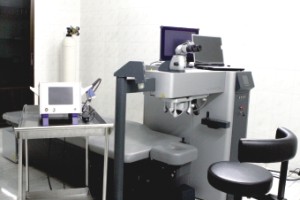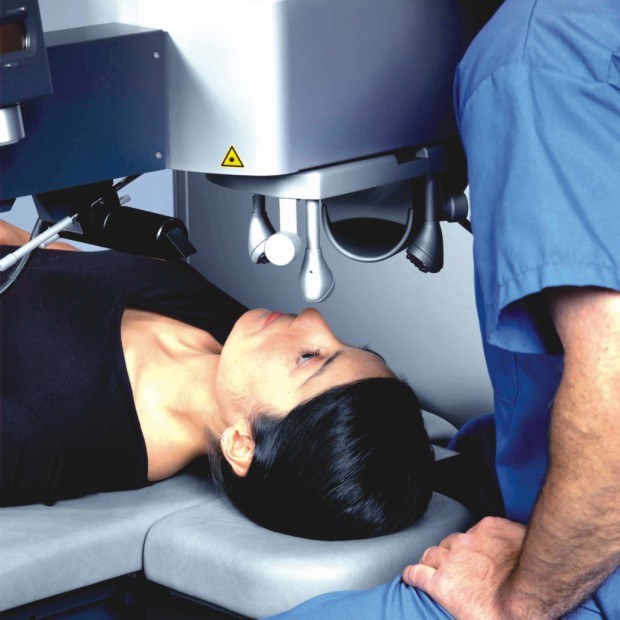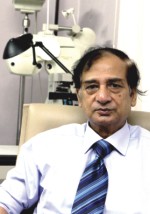| Home - Back Issues - The Team - Contact Us |
 |
| Volume 10 |Issue 22 | June 10, 2011 | |
|
|
Science Life Without Glasses ANIKA HOSSAIN
Shaila Ahmed (not her real name) had an arranged marriage. The man she married was working in Germany, where he promised to take her within a few months of their wedding, once he had prepared all the paperwork for her visa. Shaila continued to live with her parents after the wedding, while she waited for her husband. All was going well, until one day, when her brother-in- law came to visit her unannounced, and saw her wearing thick spectacles. Shaila had been wearing spectacles for a long time, but had not worn them when the marriage was being arranged or on her wedding day. Her brother in law informed his parents of what he saw and they were furious. They accused her parents of tricking them into allowing their son to marry a "blind girl" and demanded a divorce. Shaila's husband was against this idea at first, but his parents convinced him that it would be best for him and his future children who could be born blind if she mothered them. Eventually, Shaila was divorced, and forced to start afresh. Although shocking and unreal to some of us, this type of incident is common in Bangladesh. There are many misconceptions surrounding the need for glasses, creating a stigma for those who wear them. This affects young women, who are unable to get married and many people who want to get certain jobs--a prime example being a position in the military. Those who need glasses are ashamed to wear them and avoid doing so whenever they can. Interestingly, most of the facts we think we know about our eyes and glasses are infact myths. Food such as small fish and excessive amounts of vegetables have nothing to do with the power of glasses-- it actually depends on one's genetic makeup. Wearing glasses has nothing to do with an increase or decrease in your eyeglass power. Adults who need glasses will see better if they do get them, they will not see less if they choose not to. Reading in insufficient light, watching TV for long periods of time, working on your computer etc may tire out your eyes, but they will not "ruin" them. Give your eyes some rest and they will be as good as new.
"The most common misconception in our society is that wearing glasses means you have defective eyes," says Dr Rashid Hyder, a reputed eye surgeon in Dhaka, "If you can see properly after wearing glasses, you have good eyes." According to Hyder, in the human eye, the front surface known as cornea and a lens inside the eye, work like the lenses of a camera to focus images inside the eye. The light rays that enter into the eye through the pupils, are focused onto the surface of the back of our eye known as the retina. If an eye is perfectly proportionate, the power of the cornea and the lens exactly match the length of the eye and the images are clear and focused. However, if there is some discrepancy in the length of the eye, it is called a refractive error, which results in blurry vision. There are various types of refractive errors. Myopia or nearsightedness, which causes distant objects to be blurry and closer objects to be clearer, Hyperopia or farsightedness which does exactly the opposite and Astigmatism, which causes the shape of the cornea or lens to be distorted resulting in several images forming on the retina which, in turn causes all objects, whether near or far, to appear blurry. Glasses and contact lenses simply bend the light rays entering the eye in different ways depending on the nature of the refractive error, to help focus the image. While this is helpful, it is not a cure for refractive error, and has proved to have many disadvantages. "Apart from the social stigma which is a major drawback in Bangladesh, spectacles cost time and money," says Hyder "they may mist over in humid weather conditions, collect precipitation, get misplaced or broken, take away from the beauty of some faces and they often give rise to negative symptoms if they are not made perfectly or are wrongly prescribed."
Unfortunately, there were no alternatives to spectacles, until about twenty years ago, when a medical procedure known as Laser- Assisted In Situ Keratomileusis (LASIK), which offered to help reduce the dependency on glasses and contacts, was introduced to the market in the USA. "LASIK has been very popular in western countries for the past fifteen years, but was brought into our market in Bangladesh only ten years ago, in the year 2000," says Hyder, who is also a pioneer in introducing LASIK surgery to Bangladesh. "LASIK surgery does not cure eye diseases, it simply helps correct the refractive error in your eyes, enabling you to get rid of your glasses for good. I call it a social eye operation," explains Hyder. According to Hyder, LASIK can cure certain corneal diseases, but if it is used for that purpose, the surgery bears a different name. "Often, we see cases where a person has a very high power in one eye and almost no power in the other," says Hyder, "Under these circumstances the brain has difficulty processing the different signals these eyes are sending. In such cases the eye with the high power is neglected and it becomes what we call a lazy eye. LASIK helps bring both eyes to the same level." LASIK can also help reduce the power if not completely eliminate it in serious cases where the power is as high as -18. LASIK surgery is a quick and simple one, which involves highly modern technology. The machine consists of a mechanical microkeratome (blade) or a laser keratome which is used to cut a flap in the cornea. The patient remains awake during the procedure, and is given a few anesthetic drops and a Valium for the pain. The eye is held open by the machine, as is the flap, which folds back to give access to the stroma or the middle section of the cornea. The thin blade and laser then get to work on the stroma, thickening it or thinning it depending on the nature of the patient's refractive error, after which the flap is replaced. The whole procedure if performed on both eyes takes around ten minutes. "The patients recover very quickly post surgery," says Hyder "They wait for about an hour or so in the post operation chamber, until their eyes are no longer watering. I prescribe eye drops for them and ask them to apply these every two hours. I do not even bandage their eyes. I send them home soon after, advising them to rest their eyes, and do nothing but sleep and eat for a day. They are completely recovered the next day." According to Hyder the most common worries among the patients are that the machines will cut too deep and damage the eye in some way. "This is not possible," says Hyder. All the information regarding the patient's condition is programmed into the computer, which manages the machine. This includes the thickness of the patient's cornea, so the machine knows exactly when to stop. It will stop automatically if it reaches that point where it cannot go deeper. The machine also has a tracker. If the eye moves slightly, the machine has a range and it will move with the eye within the range. If the eye moves out of the range, the machine will stop. This technology is extremely safe. The only thing that can happen is that after the operation there might be infection so we ask the patients to be careful and not to go out for a while without sunglasses," Hyder elaborates. The patients have to go through several tests before they are approved for this surgery to check their eligibility. Patients with extremely thin corneas and those with other eye diseases are not considered fit for this surgery. Although quick and almost painless, this procedure does not come cheap. "We charge 27,000 Takas for the tests and about 41,000 Takas for the operation," says Hyder. "Altogether, the cost amounts to 45,000 Takas. We know this is expensive by Bangladeshi standards, but it is far more expensive abroad. Our machine has cost 4 crores, and we paid for it by taking out a loan. We are still running at a loss so we cannot charge less than this amount. We hope that in the future, when LASIK is more popular, we can make it cheaper," says Hyder. Like every surgery, LASIK has its drawbacks. According to recent research, your eyes may either be overcorrected or under corrected, in some cases, you may still need glasses or contact lenses to achieve your best vision even after the surgery, your results may not be permanent and you may need to get a re LASIK years after your initial surgery, you may suffer from double vision, hazy vision or fluctuating vision from day to day, you may have dry eyes and procure an infection if you do not take proper care post surgery. It must be emphasised however that these cases are extremely rare and LASIK has proved to be accurate and effective and most patients are satisfied with the results. Many Bangladeshis are now becoming familiar with LASIK surgery. Farhana Amin, who is in her twenties has recently had this surgery done and is very happy with the results. "LASIK has changed my life," says Amin who had been wearing glasses since she was in the 8th grade. "It has helped to boost my self confidence and people actually see me differently now. I feel like my friends like me better this way." Tapan Chandra Das who is also in his twenties is very pleased with his LASIK. "I used to be fascinated by underwater sports, but because of my poor vision and glasses, I was unable to participate in them, LASIK has helped me overcome that," he says. Hyder is confident that LASIK will become as popular as cell phones soon. "Right now cataract surgery is the most common surgery of the human body, but in twenty years or so LASIK will replace that. It helps people change their entire outlook on life," smiles Hyder. As for Shaila Ahmed, she decided not to be held back by her need for glasses. She went to Dr Hyder soon after her divorce and got contact lenses. As soon as LASIK was introduced seven years later, she got that done too. She is now happily married and living in the US with her husband. Without her glasses, she is now a new person, confident and independent and completely happy.
Copyright (R) thedailystar.net 2011 |


